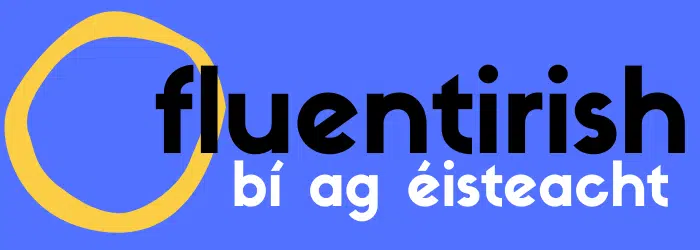We Take A Look At How Many People Speak The Irish Language 🤔
How Many People Speak The Irish Language? 🤔: The decline of the Irish language, for me, is unsurprising when you think about it. That is because nowadays, it is more practical to speak English: the universal language. As a result of that, practicality meant speaking the English language over the Irish language. With that said, it certainly made me think, “how many people speak the Irish language nowadays?”
Statistics will show just how many. Are there still a considerable amount? Or, is it steadily declining as time goes by? Let us discuss that in this blog.
Taispeánfaidh staitisticí cé mhéad. An bhfuil méid suntasach ann fós? Nó, an bhfuil sé ag laghdú go seasta de réir mar a théann an t-am thart? Lig dúinn é sin a phlé sa bhlag seo.
How Many People Do You Think Speak The Irish Language Or Gaelic?
>>Check out the latest podcasts on FluentIrish.com – and start improving!
A significant amount of people speak the Irish language, but…
As mentioned, many still speak Irish Gaelic to this day. In fact, a 2016 census states that 1,7610,420 or roughly 39.8 per cent can speak Irish in the Republic of Ireland. If you ask me, that is a significant amount of people! While those numbers may impress you, it certainly does not equate to overwhelming.
Those mentioned speakers only use the Irish language at times – not all the time. Of the 39.8 per cent mentioned, only 73, 803 (4.2 per cent) of them speak the Irish language daily. 31.7 per cent, or 558,608, of them speak it within the education system.
Additionally, 111, 473 (6.3 per cent) spoke the Irish language weekly, while 33.3 per cent, or 586,535 speak it less often. There are also those who do not speak the Irish language at all – 418, 420 or 23.8 per cent, to be more precise. And finally, 0.7 per cent, or 12,581, are not stated within the census.
Additional statistics
How many men speak the Irish language? How many women? Are there much more male Irish speakers than females or vice-versa? Which city holds the highest Irish speakers? These are certainly interesting topics that many would want to know. So, let us discuss these in this section.
There are more statistics to be said, aside from the above mentioned. Time and time again, I always mention Gaeltacht. For those of you who’re reading this the first time, Gaeltacht simply means an area in Ireland that has predominantly Irish speakers.
And, among the many places in Ireland, the county Galway has the highest percent age of Irish speakers, with 49 per cent, due to it having a large Gaeltacht population. Meanwhile, Dublin has the lowest Irish speakers with just 29.2 per cent.
In a similar fashion, Galway and its suburbs tops the list again when it comes to city populations with the highest number of Irish speakers. To be precise, 41.4 per cent of the Galway and suburb population has Irish speakers, while Dublin and the area around it are once again at the bottom, with just 32.8 per cent.
But, even with the relatively low number of Irish speakers, in Dublin, did you know that it houses 14,903 daily Irish speakers? That means Dublin produced the highest number of people speaking Irish daily!
Now, as for which gender speak the Irish language more, the answer to that is the females. In every age group up until 45-54, more women speak the Irish language than men, whilst more men speak the Irish language than women after the age group 45-54.
People speak the Irish language less now because of a past event
The Great Famine, in particular, really dealt with the Irish language and removed its spot as the primary language in Ireland. Before, people in all of Ireland speak the Irish language. However, due to the mentioned famine above, it not only lessened the Irish speakers in County Monaghan, but it also affected every nook and cranny of Ireland.
Dhéileáil an Gorta Mór, go háirithe, go mór leis an nGaeilge agus bhain sé a láthair mar phríomhtheanga in Éirinn. Roimhe seo, labhraíonn daoine in Éirinn go léir an Ghaeilge. Mar gheall ar an ngorta a luaitear thuas, áfach, laghdaigh sé ní amháin na cainteoirí Gaeilge i gContae Mhuineacháin, ach chuaigh sé i gcion ar gach cearn agus cranny in Éirinn freisin.
But, according to Irish Identity, the decline of the Irish language happened way before the Great Famine. As we may all know, this started when English entered the fray due to expanding foreign controlled areas. The “Gaelic way of life”, as the article stated, in the seventeenth century started to decline, as a result.
Along with that, the Nations School systems started in the 1830’s, hitting the nail on the coffin. So, you can all imagine what happened then – the banning of the native language not just inside the classroom, but also in the playground outside school.
Tally stick: punishment for speaking Gaelic
Based from the statements above, obviously, a corresponding punishment will ensue once students speak the native language. In particular, the “tally stick” was implemented to keep students from speaking it. As also stated by Irish Identity,
A ‘tick’ was notched on the stick for every word of Irish that they uttered during the school day, and they received a corresponding punishment at the end of the day for same. Little wonder that they quickly decided to forget their native tongue, and little wonder also that the patriot, Padraig Pearse, later described that same National School system as ‘the Murder Machine’.
Despite all that, the Irish language was not lost completely and a number of people speak it up to this day. Adding to that, Irish language schools or Gaelscoileanna (Gaelscoil in singular form) have now been established that passes on the Irish culture to the future generations to come.
The conclusion
Although relatively few, a number of people still speak the Irish language up to this day. A number of events transpired that caused its decline, but those who wish to learn their Irish culture and heritage still have plenty of resources to go to in learning the Irish language.
>>Which level?: Find out which level of spoken Irish you understand!




